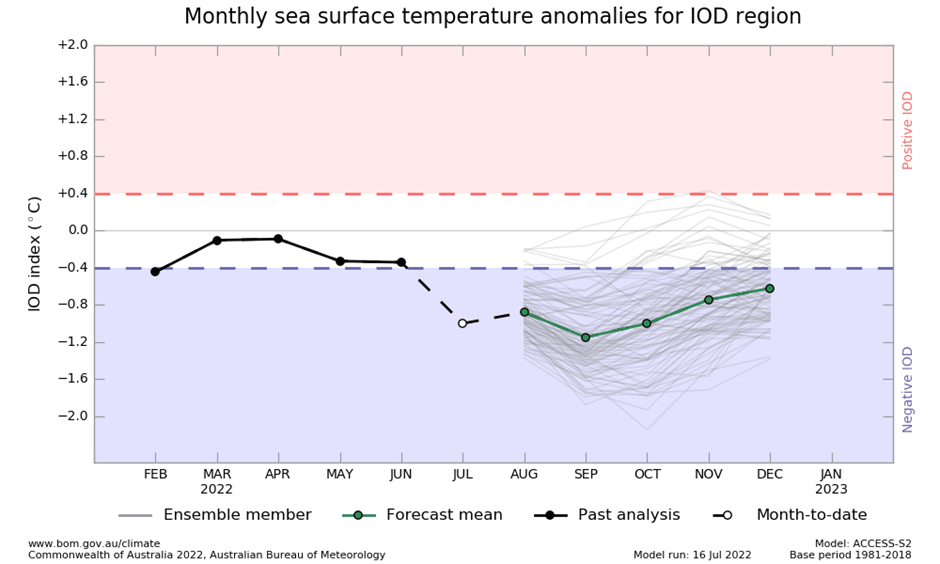Above average rainfall to continue for many regions
21 July 2022
Key points:
- All five climate models the BOM surveys are forecasting the negative IOD weather pattern to persist into November.
- A negative IOD will drive increased rainfall across southern Australia during a key growing and marketing period for Australia’s sheep and cattle producers.
- The BOM is forecasting a 50% chance of a third La Niña to return in 2022.
Increased rainfall for southern Australia and the NT will persist into November, according to the latest modelling from the Bureau of Meteorology (BOM).
All five climate models surveyed by the BOM are forecasting for the negative Indian Ocean Dipole (IOD) weather pattern to persist until November.

Figure 1: Forecast negative IOD to November 2022.
A negative IOD results when there is a warming of sea surface temperatures in the eastern Indian Ocean on Australia’s west coast coupled with westerly winds driving increased cloudiness in north-western Australia.
These climatic conditions generally translate into increased rainfall for both southern Australia and the NT, as well as warmer than average temperatures for northern Australia.
Production impacts
A negative IOD will deliver a higher chance of increased rainfall west of the Great Dividing Range for eastern Australia, setting up and supporting favourable grass and pasture availability into the key growing season of spring.
As a result of the wetter than average spring and warmer air temperatures following winter, a negative IOD will provide an opportunity to improve the finished quality of livestock prior to sale.
Improved weight gain performance, finished quality of stock and optimal grazing conditions that will be supported by this increased rainfall will continue to underpin Australia’s herd rebuild and flock growth across the eastern seaboard.
More information
To view the BOM’s Indian Ocean Dipole (IOD) forecast, click here


